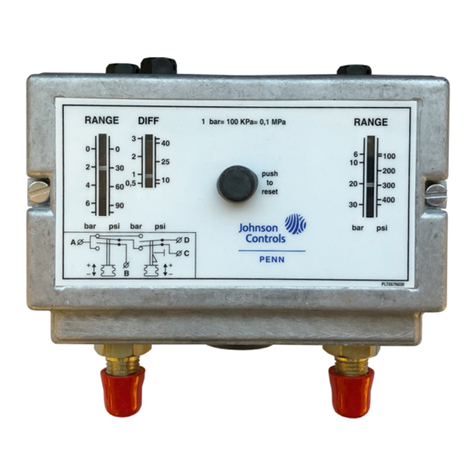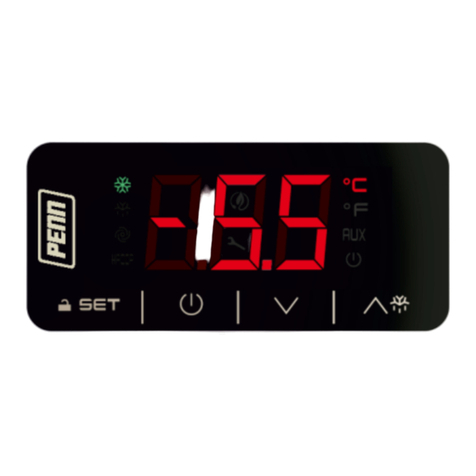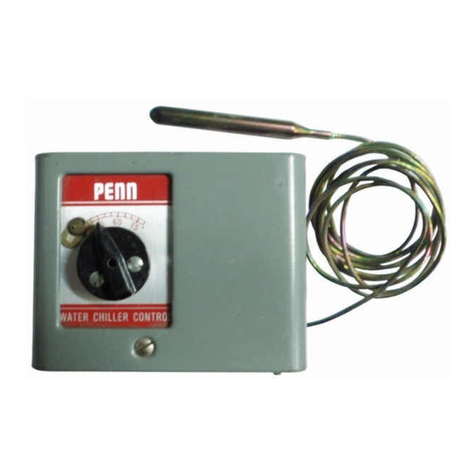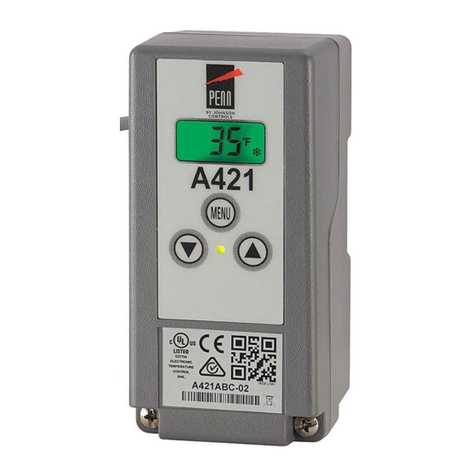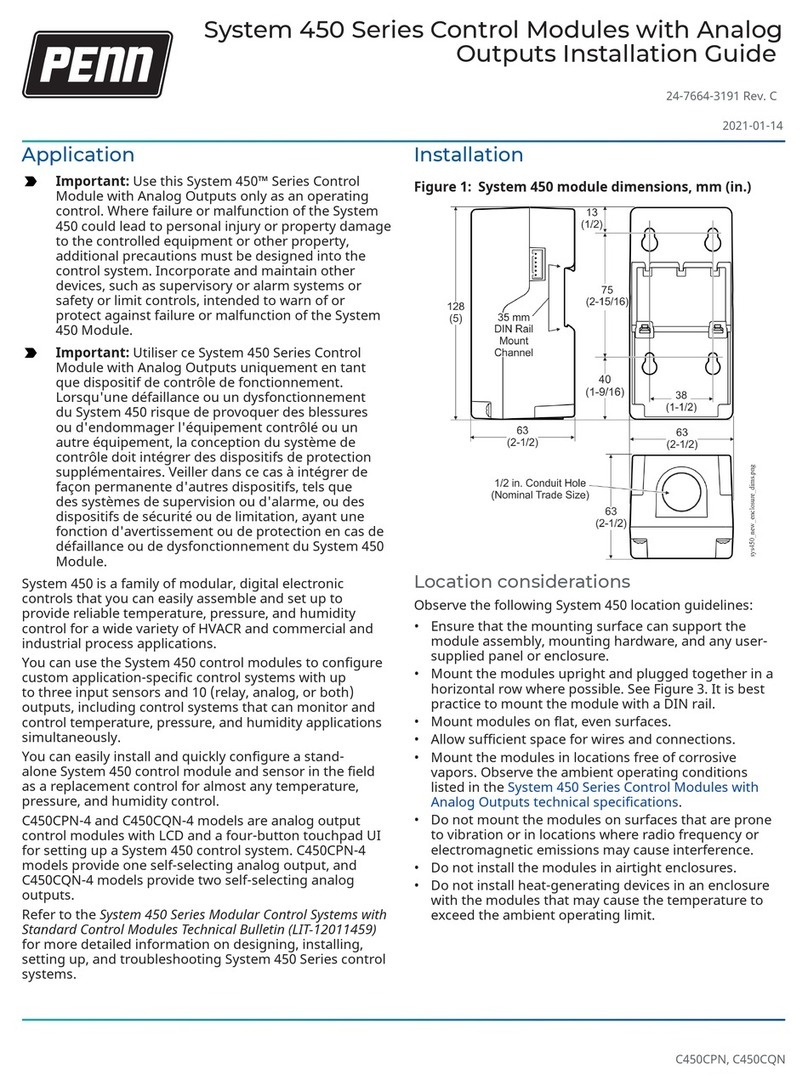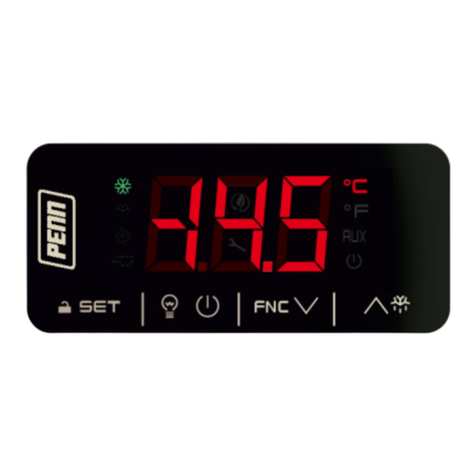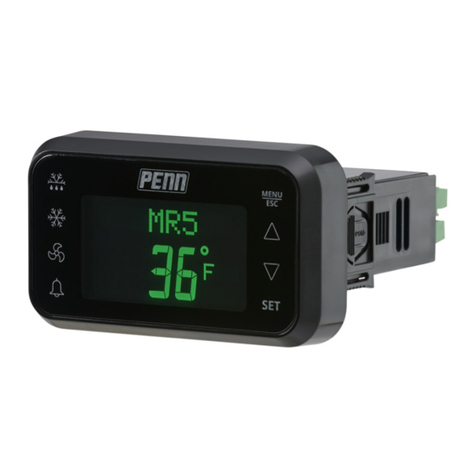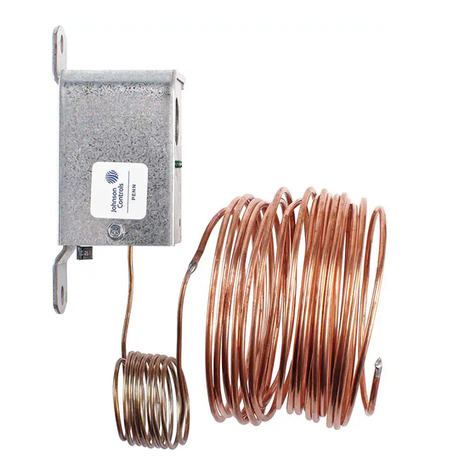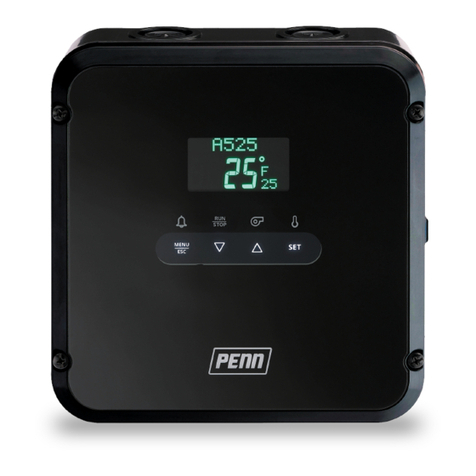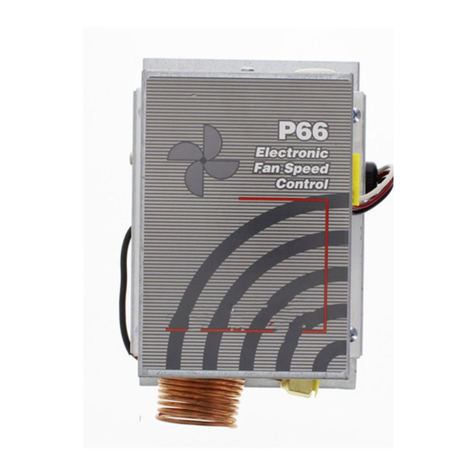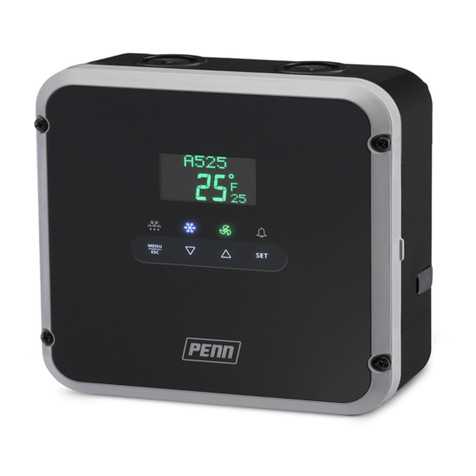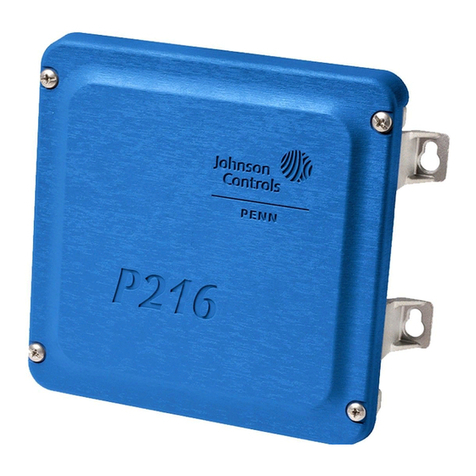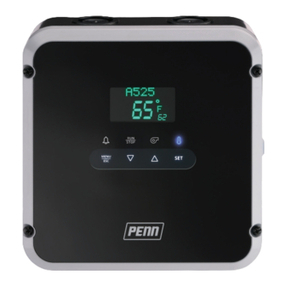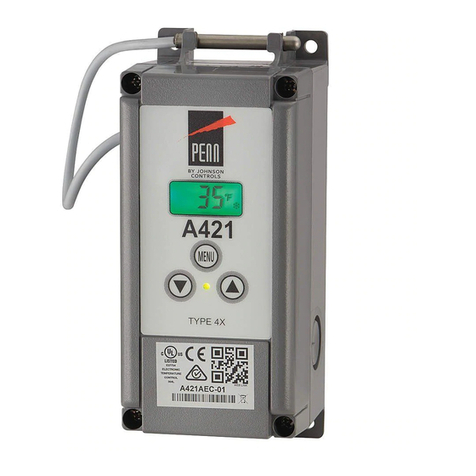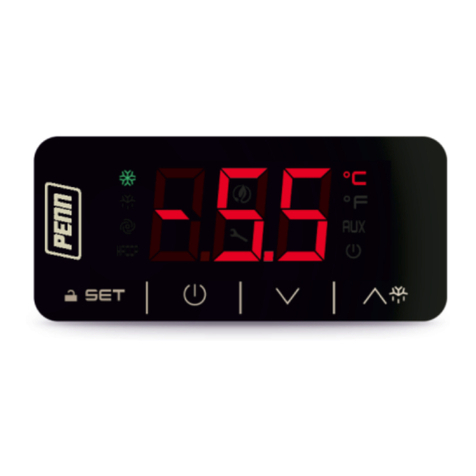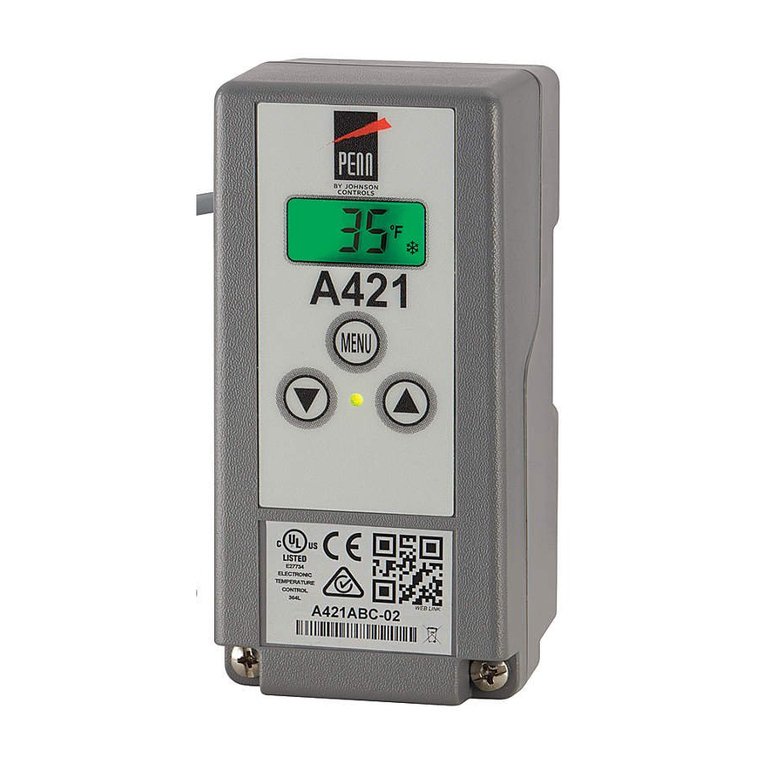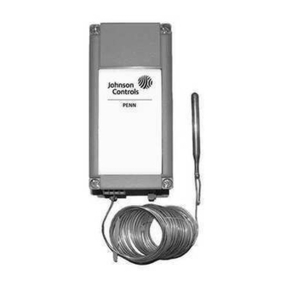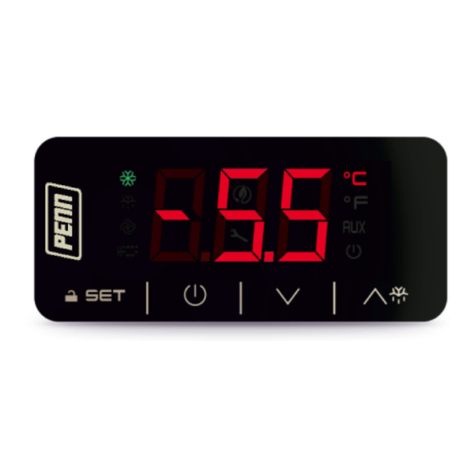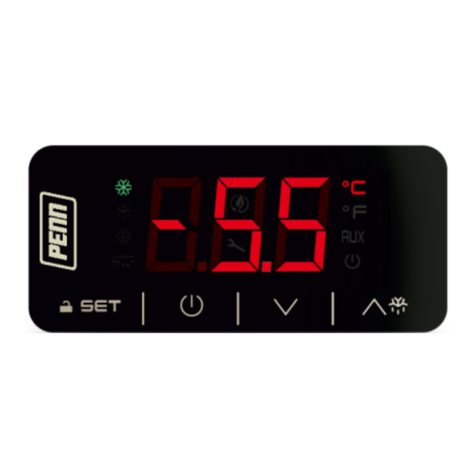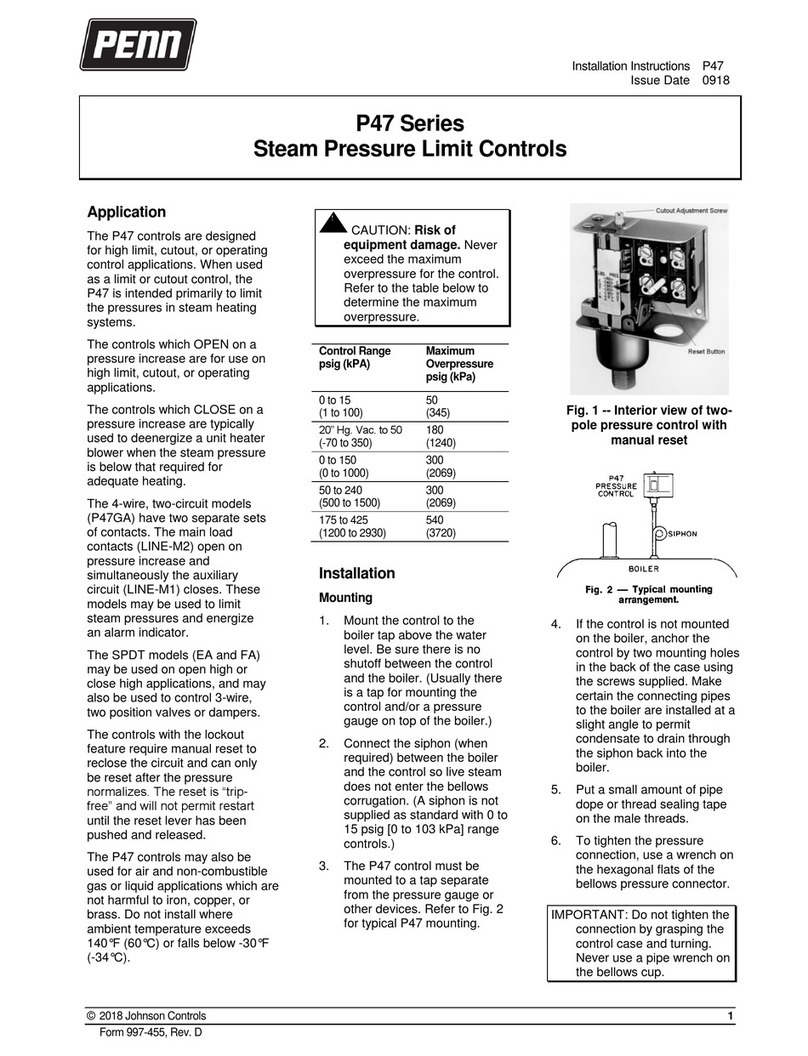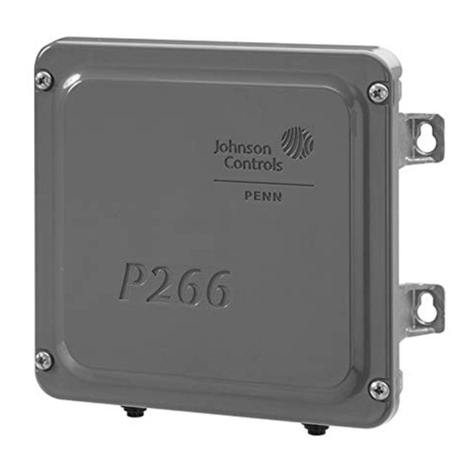
P470 Electronic Pressure Control with Display Product/Technical Bulletin
9
Troubleshooting
Determine the correct supply voltage for the control
that you are troubleshooting. See Figure 4, Figure 5,
and Figure 6 for the wiring diagram and terminal
designations for the control.
See Figure 3 and Table 2 for more information about
error codes that appear on the LCD.
On dual control applications, disconnect one control
and check each control as a single control application
using the following procedures. See Figure 7.
Equipment needed
• An accurate and reliable pressure gauge that is
connected near the transducer
• A reliable and accurate digital voltmeter (DVM) that
measures AC and DC voltages down to ± 0.1 VDC
in the 0 VDC to 10 VDC range
1. Check for proper supply voltage to the control.
a. Before powering control and equipment, check
that all of the wiring is correct and all of the
connections are tight.
b. Apply power to the control.
c. Use the DVM to check the voltage between the
control’s supply power terminals: T1 and T2 for
the low-voltage model, and AC COM and 120V
or 240V for the line voltage model.
• Select AC volts on the DVM for low-voltage
controls powered by a 24 VAC Class 2
transformer. The supply voltage must be
between 20 VAC and 30 VAC.
• For line-voltage controls, select AC volts on the
DVM. The supply voltage must be between
102 VAC and 132 VAC for controls powered at
the 120V and COM terminals, and between
177 VAC and 264 VAC for controls powered at
the 240V and COM terminals.
d. If the voltage reading is within the specified
voltage range, proceed to Step 2.
e. If the DVM reading is not within the indicated
voltage ranges, replace the 24 VAC Class 2
transformer or check the line voltage power
source and provide proper power to the
control.
f. Recheck for proper supply voltage.
2. Check for proper supply voltage to the pressure
transducer.
a. Select DC volts on the DVM and measure the
voltage, VDCS, between 5 VDC and the COM
terminals on the terminal block on the upper
left side of the control.
b. The voltage must be 5.0 VDC (± 0.2 VDC).
If the voltage is in this range, proceed to
Step 3.
• If the voltage is out of this range, power down
the controlled equipment and disconnect it
from the control. Disconnect the transducer
from the control. With the control powered,
measure the voltage, VDCS, between the
5VDC and COM terminals on the terminal
block on the upper-left side of the control.
• The voltage must be 5.0 VDC (± 0.2 VDC).
If the voltage is in this range, replace the
transducer. If the voltage is out of range,
replace the P470 control.
WARNING: Risk of Electric Shock.
Do not touch any exposed metal parts with
anything other than properly insulated tools
or insulated probes of the digital voltage
meter. Failure to use properly insulated
tools and probes may result in severe
personal injury or death.
AVERTISSEMENT : Risque de décharge
électrique.
Ne jamais toucher une partie métallique
exposée avec tout élément autre que des
outils correctement isolés ou les sondes
isolées du voltmètre numérique. L'utilisation
d'outils et de sondes incorrectement isolés
risque de provoquer des blessures graves,
voire mortelles.
IMPORTANT: The P470 control and P499 or
P599 transducers are not field repairable. To
determine the problem, perform the following
procedures in the order they are presented. If the
control or transducer is the problem, contact a
Johnson Controls or PENN sales representative for
a replacement.
IMPORTANT: The control and the controlled
equipment must be powered and operating at a
stable pressure to perform many of the following
procedures.
